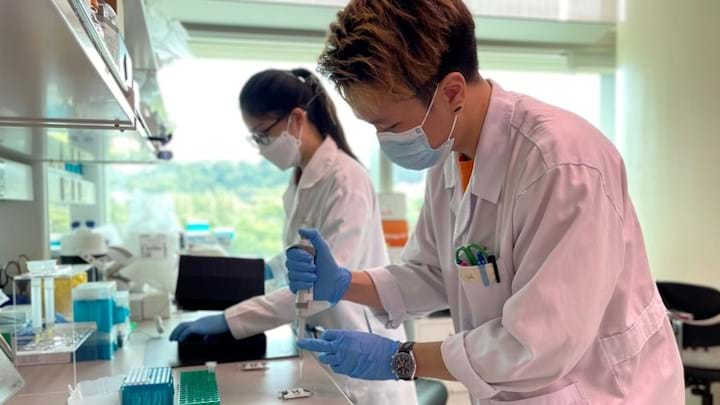Rapid test identifies Covid-19 antibodies

A RAPID test has been developed which can detect Covid-19 antibodies within ten minutes and doesn’t require the use of a laboratory.
Neutralising antibodies (NAbs) are a type of protein that prevent pathogens from infecting host cells by inactivating the pathogens. In the case of Covid-19, NAbs are generated by the body in response to either a Covid-19 vaccine or to the SARS-CoV-2 virus itself. They must be generated in sufficient quantities in order to prevent future viral infections.
Evaluating the level of NAbs that a person has is crucial to assessing the effectiveness of vaccines, assessing the immune status of vulnerable people, and determining when someone might need a booster dose. It can also be used to see if a population is close to herd immunity.
Currently, detection of NAbs is conducted in laboratories, and takes between one hour and four days for a result to be obtained, depending on the type of test. The laboratory method that is generally used relies on a virus neutralisation test (VNT) either with live virus or pseudovirus. For infection to occur, the receptor-binding domain (RBD) of the spike protein on the SARS-CoV-2 virus interacts with angiotensin-converting enzyme II (ACE2) receptors on the host cell, allowing the virus to enter the host cell. If NAbs are present in a sample, they bind the RBD and prevent this interaction from occurring. Such lab testing is not suitable for analysing the presence of antibodies on a large-scale in the population.
A new rapid test has now been developed by the interdisciplinary antimicrobial resistance (AMR) research group as part of the Singapore-MIT Alliance for Research and Technology (SMART). The test, called a rapid cellulose pull-down viral neutralisation test (cpVNT), mixes reagents with a drop of blood from a fingertip and can detect NAbs from SARS-CoV 2 within ten minutes.
The cpVNT uses a vertical-flow assay format, which means that reagents flow top-to-bottom with a rapid and controllable flow speed. The team used cellulose as a test material in the assay as it is cost-effective, easy to manufacture at large scale, and avoids the supply chain issues inherent with nitrocellulose which is in great demand for use in lateral flow assay rapid Covid-19 tests. Wax ink was printed onto to the cellulose paper to create the liquid flow path by forming hydrophobic boundaries, and the flow rate was controlled by using three layers of paper.
They engineered proteins to create the RBD/ACE II complex, which is combined with another reagent acting as a colorimetric indicator. The reagents are mixed with the blood sample and incubated for five minutes before applying to the test unit. It is then inserted into a portable reader device that analyses the NAb signals, which is used to detect the colorimetric reaction and determine if NAbs are present.
Despite its simplicity and the rapid testing procedure, the cpVNT has an accuracy of 93%, which is higher than some lab-based methods. It can be used as a point-of-care test in settings such as community clinics and doesn’t require lab access.
Hadley Sikes, Associate Professor in the MIT Department of Chemical Engineering, said: “Schools and workplaces will also benefit greatly from the test. Whether a person should be considered for receiving a booster vaccine can also be evaluated with this quick test, as the results are available within minutes from a fingertip blood sample. And, if we are able to quickly determine immunity on a larger scale, the review and relaxing of Covid-related measures can be done in a more controlled, data-driven manner.”
Peter Preiser, Associate Vice President for Biomedical and Life Sciences at NTU Singapore, said: “Besides detecting immunity to the current vaccine version of SARS-CoV-2 virus, the NAb test can be modified to monitor immunity against the other variants of the virus. This can provide information on the potential efficacy of different vaccines against each variant, or whether one should travel to areas that may have a high incidence of a specific variant.”
The cpVNT test is currently under further development so that it can be approved by regulatory authorities for public use. The team envisions having a strip with a “control” and “test” spot, with the control spot necessary to show that reagents are actively functioning. The team has formed a biotechnology startup called Thrixen to commercialise the test.
Communications Medicine https://doi.org/hcdr
Recent Editions
Catch up on the latest news, views and jobs from The Chemical Engineer. Below are the four latest issues. View a wider selection of the archive from within the Magazine section of this site.




